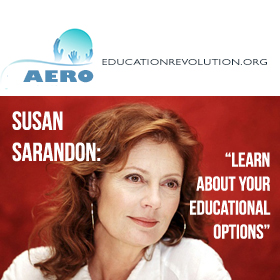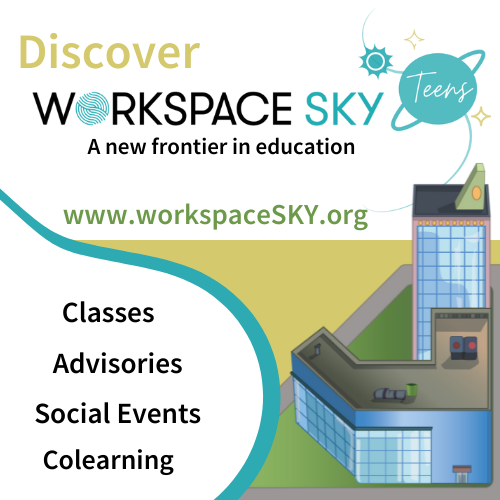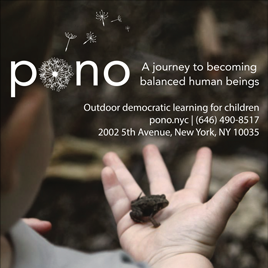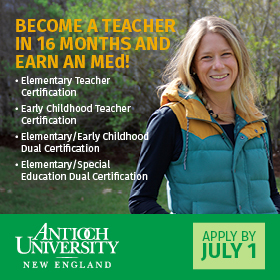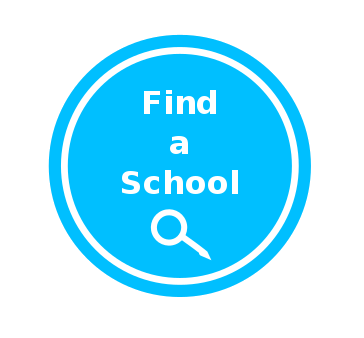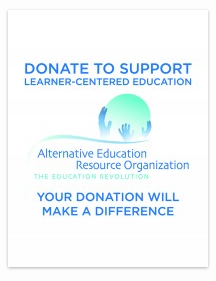GOVERNANCE IN SCHOOLS is becoming an increasingly important issue, as educators begin to realize how crucial it is to empower the participants in any educational process.
There are currently many hundreds of schools in the United States and other countries, both private and public, which operate with varying degrees of of student self-government. These take a variety of forms, including democratic vote by students and teachers, a majority vote, or consensus by students and teachers.
For the purposes of this discussion I am not including representative governments or student councils because, for the most part, they are nothing more than a sham and have very little decision making power. It is our contention that the more that the student learner can be empowered, involved in making decisions about his or her education, the more powerful that force can be toward helping them to take true responsibility for their own education. I feel that it is possible to set up such a decision-making process almost anywhere, and that all participants should have safeguards in that process.
In a true democratic process, decisions are made by using all the creative forces and all the authority of the many participants who are involved in making those decisions. To the extent that they are disempowered by special groups having veto power, to that extent is the authority and the creative power of the total body eroded.
When we founded Shaker Mountain school, in 1968, it was set up as a democratic school, with the encouragement of the then-Commissioner of Education of the state, Harvey Scribner. Students were even the majority of our board of trustees. We did this because Scribner had said we needed to have the people we could trust the most on our board of trustees (rather than those who could raise the most money), to make decisions that would be best for the school. We felt that the ones we could trust the most would be the students, themselves.
Throughout the years, all important decisions were made by the school meeting, with all students participating. When particular items were brought to the board of trustees, invariably the student trustees, the majority, would refer these decisions back to the school meeting, feeling that it was the proper forum for making any decision.
Those decisions even included such major issues as buying and selling buildings, the organization of major funding events, and all basic school policies. I feel that the procedures which were developed for the school meeting at Shaker Mountain, created the most effective school self government that I’ve ever seen, having visited several hundred alternative schools, including Summerhill, in England, which was the pioneer in this process.
In the earliest years, decisions were made by a straight majority. Our meetings were always long and sometimes emotional because the real decisions operating the school were made in the meeting. Its always seems to me that schools that reserve their meeting time for “Wednesday afternoon for one hour” couldn’t really be democratic because there are so many more decisions to be made during the week. We often had meetings that lasted the entire Monday morning and Friday morning, sometimes spilling over into the afternoons.
In addition, we had meetings for class announcements every morning during the week, which often had other decisions brought into them. Special meetings could be called by any staff or student by ringing the meeting bell. I feel that this latter feature was very important because it wasn’t necessary for someone to get permission to call a meeting or for a particular person to go around the school rounding up people for a meeting. If the meeting bell rang, there was a meeting, and the meeting bell was considered rather sacred around the school. In fact, if anyone ever rang the meeting bell when there wasn’t a meeting, there was an automatic meeting on that person “for calling a meeting when there wasn’t one.” But this probably didn’t happen more than a handful of times in 17 years.
In the following sections, I will outline the decisions governing the meeting as they evolved at Shaker Mountain School, however, I think it is important to point out that the meeting system is really more of an art than a science, and like all democracies, it is fragile and depends very much upon the respect it is given by the constituents. If at some point people begin to feel that they are not really the ones making the decisions, attendance and participation and creative energy fall off, not unlike the apathy manifested recently in national elections. On the other hand when people feel that they have important decisions to make, attendance is high.
One obvious implication of the last statement is that attendance at the meetings was not compulsory. Neither was attendance at all classes in the school. However, if a group of people at a regular school meeting felt that a particular issue was of such importance that everybody in the school needed to know about it and its consequences, somebody could propose that there be a “super-meeting.” If it was passed, that meeting become a “super-meeting.” It would be necessary for all people around the school to come to the meeting until it was voted that it did not need to be a “super meeting” any more. This probably didn’t happen any more than 10% of the time.
One interesting by-product of the school meetings was that the rate of increase in vocabulary on the part of the average student in school was 2 1/2 times the national rate. We actually had students increase 6 grade levels in a year in their vocabulary, even when they were otherwise not attending classes. We can only assume that this was a consequence of the student’s participating in and listening to the meetings, and determining that they wanted to understand everything that was being said in them.
Two of the most common approaches to self-government are democratic decision making by the majority and decision by consensus of the group. Shaker Mountain school evolved an interesting blending of the advantages of both these approaches, being heavily influenced in the early years by their involvement with the traditionalist Mohawk Indians of the Iroquois Confederacy (We had regular exchange visits with them).
This is perhaps quite fitting because it was the influence of the Iroquois confederacy that convinced Benjamin Franklin, among others, that democratic decision making was a good form of government and, therefore, a good one to be used for the fledgling independent colonies. In our early contacts with the Mohawks we discovered that they made their decisions at a council by having each member express their opinion. If a minority opinion was indicated they would then listen very carefully to that minority opinion, and allow it to be fully expressed, perhaps then changing the decision of the whole group. But ultimately, if they felt that the minority opinion was fully explored and that there were no options offered, the decision of the majority became the decision of the tribes.
An approach somewhat similar to this is used in consensus decision making, in which a person or persons may wish to “stand aside.” They may disagree with the decision, but are willing to let the decision of the rest of the members stand. As it was described to me by Eric Joy, a teacher at the Arthur Morgan School, a Quaker School in Burnsville, N.C., consensus to him means “sense of the meeting.” The clerk of the meeting will try to determine what this sense of the meeting is. If a person offers a dissenting opinion, they are given a chance to express what that opinion is, and then given some time to come up with an alternative proposal. But if they are not able to come up with an alternative proposal, it is incumbent upon the clerk to determine what the sense of the meeting is, and proceed on to make decisions based on that sense.
At Shaker Mountain, decisions were technically based on majority vote. However, it became customary at our meetings for the chairperson to ask people who had voted negatively to say why they had done so, if they were willing say. Subsequently, anybody in the meeting could then ask for a re-vote. The re-vote automatically reopened discussion. If a minority felt so strongly about a proposal that they just could not live with it, they could continuously call for re-votes at the meeting, effectively “filibustering,” causing people to come up with a better or more comprehensive or more universally acceptable proposal.
Even after the meeting was over, if anyone still felt like it didn’t sit well with them, they could call another meeting by ringing the meeting bell or putting it on a succeeding agenda. On the other hand, if people dissented on a particular decision, even if it was a fairly large number, but nobody called for a re-vote or another meeting, that decision would then stand. That minority would be essentially “standing aside.”
By making the commitment to be part of a community that makes decisions by democratic vote, the minority members are obliged to stand by the consequences of the decision of the majority. As opposed to consensus decision making, the people who voted negatively could always say “I told you so” if things don’t work out well. This latter observation is not necessary just a joke, because one of the potential negative consequences of some kinds of consensus decision-making processes is that people could be manipulated out of their opinions in order to reach consensus.
In some school democracies the students elect a chairperson who then chairs the meeting for a semester or some fairly long period of time. This is how it is done at Summerhill. At Shaker Mountain, everybody at one time or another chaired the meetings. Because so many of our decisions were made by democratic meetings under so many different circumstances, it was felt that it was important that everyone learn how to run a good meeting. When a new student came into the school, they would often be elected to chairperson. Then people would ‘kibitz’ them into becoming good chairpersons as they struggled in the initial phases.
At the beginning of each meeting the people who wanted to chair the meeting would indicate so, or there could be nominations from the membership. There was then an immediate vote by show of hands, a process that generally would only take a minute or so. The person who got the most votes would become chairperson and start the meeting, usually with the words “who called this meeting and why?” if it was a special meeting, or “what is the first thing on the agenda,” if it was a regular meeting.
If the chairperson needed to leave the room or was getting tired, they could appoint somebody else to be chairperson. If people felt that the person who was chairing the person was flagging in their attention or was not doing a good job at that point, they could call for a new chairperson. If there was a call for a new chairperson there would be an immediate vote whether or not there should be a new chairperson. If the majority disagreed, the chairperson continued.
If the majority of people indicated that they thought there should be a new chairperson, the current chairperson could either name another chairperson at that point or there would be another immediate election. People tended to elect those whom they thought would get us through the meeting efficiently, but anybody who wanted to chair a meeting generally got a chance and had plenty of opportunities.
The meeting was not allowed to go on, whether it was a special or a general meeting, unless somebody had volunteered to take the log and keep track of the proposals and the decisions that were being made in the official log book.
The log book was a large, hand bound volume of blank pages. Several log books would be filled up during a school year. When a topic was put on the agenda the chairperson would ask who put it on the agenda. The person who put it on the agenda would explain why they put it on. Then a discussion of that topic would ensue. People could make proposals that needed to seconded. Those proposals did not need to be voted on one at a time but could be voted on in a list when somebody “called the question.”
One somewhat unusual decision that was made by the meeting concerned this “calling of the question.” Rather than have this be done strictly by majority vote, it was determined by the meeting that if 5 people were opposed to the question being called (and, therefore, discussion being ended and a vote taken), that was sufficient for us to continue discussion. I don’t recall where the number 5 came from, but it always seemed to be a reasonable procedure.
For somebody just visiting the meeting for the first time, this could be very confusing because somebody would call the question; the chairperson would say “all those opposed,” a vote would be taken, and if there were more than 5 people opposed, the meeting would continue. For the uninitiated, they might wonder if they had missed something: Did they miss the vote of those in favor?
The skill of the chairperson was often determined by their ability to notice when people had raised their hands to speak, and in what order. Sometimes a chairperson would write the names down so they would remember the order in which people had raised their hands. However, it was considered the prerogative of the chairperson to call on people who they felt would move the meeting forward the best.
This for example might include calling on people who had not spoken yet, even if they had only raised their hands after other people who had spoken before. It was also their job to point out to the meeting when they thought certain points had already been expressed, or that people were repeating themselves. The chairperson could call for a vote without the question being called if nobody objected.
New items could be added to the agenda during the meeting. This was sometimes done at the urging of the chairperson when he felt that the business had strayed from the original agenda item and that there was another issue to be decided.
It is important to point out that there was no veto power over the decisions that were made in the school meetings. The staff, for example had two long meetings a week, but the staff had no arbitrary power. The staff were free to offer whatever classes they wanted, and discuss whatever kinds of things they thought were important to the school, but they could not make decisions for the entire school.
Any changes that the staff wanted to make in the overall school policy had to be brought to the school meeting. The meetings often made many creative decisions, decisions that might not have been thought of by any individual operating on their own. I think that it is important to note that we went into the meeting without having a pre-set idea about the decisions that the meeting “should” make, but rather, fully expected that the meeting would be greater than the sum of its parts, and would find a creative solution that no one individual could foresee.
One early decision that was made at the school meeting was the creation of the “stop rule”. It was noted that conflicts between students often arose when two students would be horsing around and one wouldn’t realize that the other had become upset. In such a circumstance, it was decided that the person would then say “stop” at that point, and if it was not clear what they were saying “stop” to, they would say “stop to wrestling”, or even to “stop to calling me fatty.” Those words would communicate the fact that that student was at the point of great frustration and would otherwise feel that they were about to get into a real fight. One of the first questions that would be asked in a school meeting was “did so and so say ‘stop’?” If they had said “stop” and somebody broke the stop rule, it was taken to be a very serious transgression.
We note that at Summerhill, fining people from their allowances is often a consequence of negative behavior. At Shaker Mountain people generally were of low income and did not have money which they could be fined, so a lot of discussion centered around whether a student would be given a “warning” or a “strong warning” for a particular behavior that people objected to. It was sometimes amazing to me how important people found this distinction to be.
A “warning” meant that there would be no particular consequence at that point except for the equivalent of community censure. But a “strong warning” meant that the next time the community could not take that option, but needed to take action. It was very uncommon for some kind of negative behavior to go beyond the strong warning stage. When this did occasionally happen people would go scrambling through the log to see if the person had gotten a warning or a strong warning for the previous behavior.
Our meetings were not only used for discipline in that sense, but also for positive brainstorming. For example class announcements would be made in meetings. Anybody could announce a class. Trip meetings would also be announced there, and the trip meeting would decide where they were going to go and how they would raise the money to get there.
If someone had a problem that came out in a meeting that looked like it was going to take more attention than the meeting could provide, someone would often propose that there be a “small group” to help that person. Anybody could volunteer to be part of that small group but the people in the group would have to be approved by the person for whom the group was being formed, or in the case of a conflict between two people, by both parties.
Our process of conflict resolution by meeting was so effective that we would often go an entire school year without any kind of a physical fight between students. Especially because of the size differentials and age differentials between students in the school, physical force was very highly frowned upon. The meeting did have the power to suspend a student from the school or kick them out of the school. What was more common as a result of serious transgressions over a period of time would be for the meeting to propose that a student be sent back through the admissions procedure and under the supervision of the admissions committee, as if they were a new student trying to get into the school.
The admissions committee was comprised of students and staff who ran for the office and were elected by the school community annually. I regularly ran for it, because I usually had the basic information about a new student. Sometimes I was elected. Sometimes I wasn’t. One student explained to me once that he had not voted for me because he felt I had enough power just sitting in on the admissions meetings.
One final and important point: People were respected in my school and in the meeting for who they were and what they said. I had to express myself strongly because of the fact that I had no arbitrary power. Others learned how to do the same. I knew I would be listened to, and that the meeting had fail-safe procedures. Sometimes my ideas were accepted by the meeting. More often, we came up with something better. We had faith in our ability, as a group, to solve any problem that came along. And for the 17 years that I was there, we did just that.
These ideas have been adapted for use by a wide variety of schools and programs. Sussex School, a 70 student independent alternative in Missoula, Montana, had a waiting list of 325. Those people, with the help of Sussex, hired me to help them create a new school. Organizing a meeting of potential students direcly from the attendees, we had the “first meeting” of the new school, before it even had a name. My niece, 11 year old Jenifer Goldman, whom I was homeschooling at the time, chaired the first meeting. This ultimately led to the creation of Shining Mountain School, and a spinoff school called Avalon. It also led to a public school alternative that was inspired by the process.
This democratic meeting process has also been developed for use by such diverse groups as LIGHT, a Long Island homeschool group, and Islip Alternative, a public school program for “at risk” high school students. The homeschoolers were immediately at home with the idea, with even the youngest, a four year old, participating fully. At first, the students at Islip were skeptical of the idea, but as we went along, you could see the body language of the students change.
They committed themselves to the idea of their own empowerment, and continued to have such meetings every week. When the school district made plans to lay off some of their teachers at the end of the school years because of budget cuts, these “at risk” students were the only ones in the district to mount a protest to the school board. One of the teachers told me that she was sure it was because they had become empowered by the democratic school meetings.
If you would like to arrange a consultation, or for more information, contact Jerry Mintz at jerryAERO@aol.com or call (516) 621-2195.
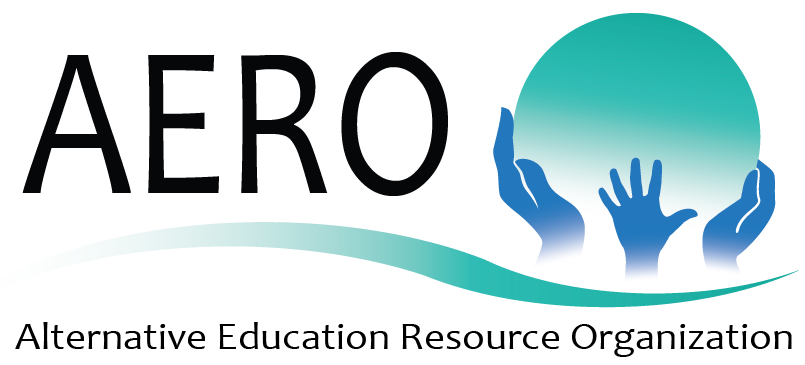


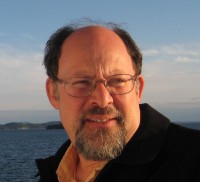 Isaac Graves: What does community mean to you?
Isaac Graves: What does community mean to you?
 Isaac Graves: What does community mean to you?
Isaac Graves: What does community mean to you?
